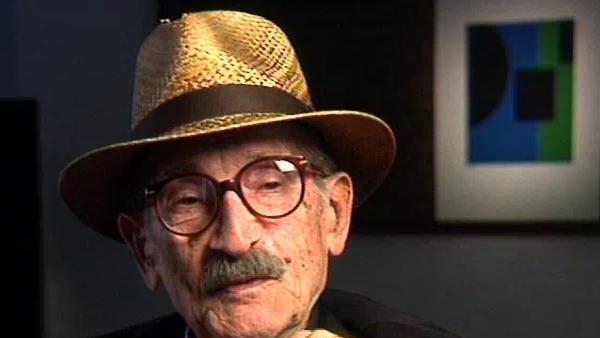NEXT STORY

Central figures at UPA
RELATED STORIES

NEXT STORY

Central figures at UPA
RELATED STORIES


|
Views | Duration | |
|---|---|---|---|
| 21. Ward Kimball | 111 | 01:21 | |
| 22. Other Disney animators; 'You have it or you don't have it' | 104 | 03:19 | |
| 23. Unionism and the 1941 Disney strike | 124 | 01:21 | |
| 24. Joining the Air Force | 70 | 01:44 | |
| 25. Work in the Air Force: maps and abstraction | 73 | 02:07 | |
| 26. Abstract art and me | 81 | 04:50 | |
| 27. Working for the military Motion Picture Unit | 73 | 05:03 | |
| 28. Hollywood’s high-flyers | 61 | 03:28 | |
| 29. Leaving Disney and forming UPA | 88 | 02:28 | |
| 30. Central figures at UPA | 81 | 02:08 |


After Bambi, there was something of - not Pinocchio, not - it came into another area of very popular folk art, folk art. And then after that, I just had it, you know? And also by that time, there were certain things me and my friends were beginning to push, to go for that studio of our own. And that's when Mr Magoo came about. Gerald McBoing Boing, Frankie and Johnny, all those films, came now from this organization. There's about four of us. We were after the job at Universal, we know it was open, it was there. So the idea was, we had to do three films, we got paid for it, you know? And if we can deliver three films on time, we got a contract with Universal - with the studio. So the important thing was, not the content but whether we can deliver on time. Now, we can still deliver on time with crap, it would be still okay. But if we delivered a day or two days later and we had a masterpiece, it was not okay. Because they didn't want it better and they didn't give a damn. You see, it was: make sure that we can deliver on time. So that's when we had UPA [United Productions of America] and that started a whole new world of animation. And it was very interesting because Walt - not Walt, but Ward Kimball, now here comes Ward Kimball. He loved the stuff we did at UPA, you know? And he ran to Walt and all those people. 'Lets do it like that'. And Walt says, 'No way, that's not me, that's them'. We had a studio right next door to the smoke house, and he says, 'That's to them, next to the river'. You know, he was talking about us. Oh, and also, he told long-hairs - that's with those long-hairs by the river, you know. But Walt was honest. You see, they wanted to draw like UPA. Walt is, 'What the hell you talking about? That's not me, that's them.'
The late Hungarian-American film-maker Jules Engel is best known for his contribution to the field of animation. His work includes the dance sequences in Walt Disney's 'Fantasia' and the creation of 'Mr Magoo'. His films and lithographs are housed in museums all over the world and have won many awards.
Title: Leaving Disney and forming UPA
Listeners: Tamara Tracz Bill Moritz
Tamara Tracz is a writer and filmmaker based in London.
William Moritz received his doctorate from USC and pursues parallel careers as filmmaker and writer. His forty-four experimental and animation films have been screened at museums in Paris, Amsterdam and Tokyo, among others. He published widely on Oskar Fischinger, James Whitney, Bruce Conner, the Fleischers and 200 pages of animation history for an AbsolutVodka website. He wrote chapters for the "Oxford History of Cinema", appeared in several television documentaries, curated art exhibits and received a lifetime achievement trophy from the Netherlands Royal Academy for his work with visual music. He has served on film festival juries and received an American Film Institute filmmaking grant. His poetry and plays are also performed and published. He is a leading expert of Oskar Fischinger and recently published a biography of him. He teaches at The California Institute of the Arts.
Tags: Bambi, Pinocchio, Gerald McBoing Boing, Mr Magoo, Frankie and Johnny, Ward Kimball
Duration: 2 minutes, 29 seconds
Date story recorded: April 2003
Date story went live: 24 January 2008